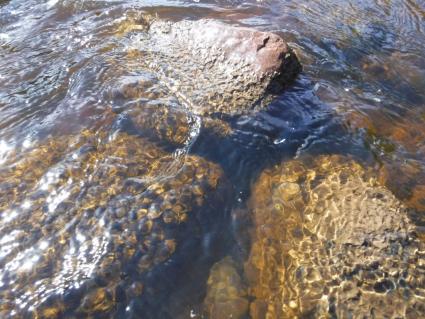'Rock Snot' algae located in the Poplar River
There is snot in the river. Literally.
The Minnesota Department of Natural Resources advises anglers, hikers and other users of the Poplar River to be aware that a species of freshwater algae called didymo, also known as “rock snot,” has been identified in upstream waters of the river near Lutsen, beyond the Lake Superior splash zone where it has previously been documented.
Algae experts at the Science Museum of Minnesota and University of Wisconsin – Oshkosh have confirmed the identification. DNR fisheries and invasive species biologists will be searching other nearby streams and rivers this fall to verify the extent of its distribution, according to a release sent to WTIP in late October.
This type of algae is present in low densities in Lake Superior, but was not previously documented in the upper watersheds. Once considered invasive throughout the United States, recent research has shown this species to be native in parts of North America.
The freshwater algae live in low nutrient, low-temperature environments that are common in North Shore streams and Lake Superior. Under the right conditions, this type of algae can form dense mats of brown slime that smother streambeds and may affect stream invertebrates that are food for fish, birds and other animals.
WTIP’s Joe Friedrichs spoke with Heidi Rantala, a freshwater ecologist for the Minnesota Department of Natural Resources based in Duluth, about the algae and what this means for the Lake Superior North Watershed.
Tweet







